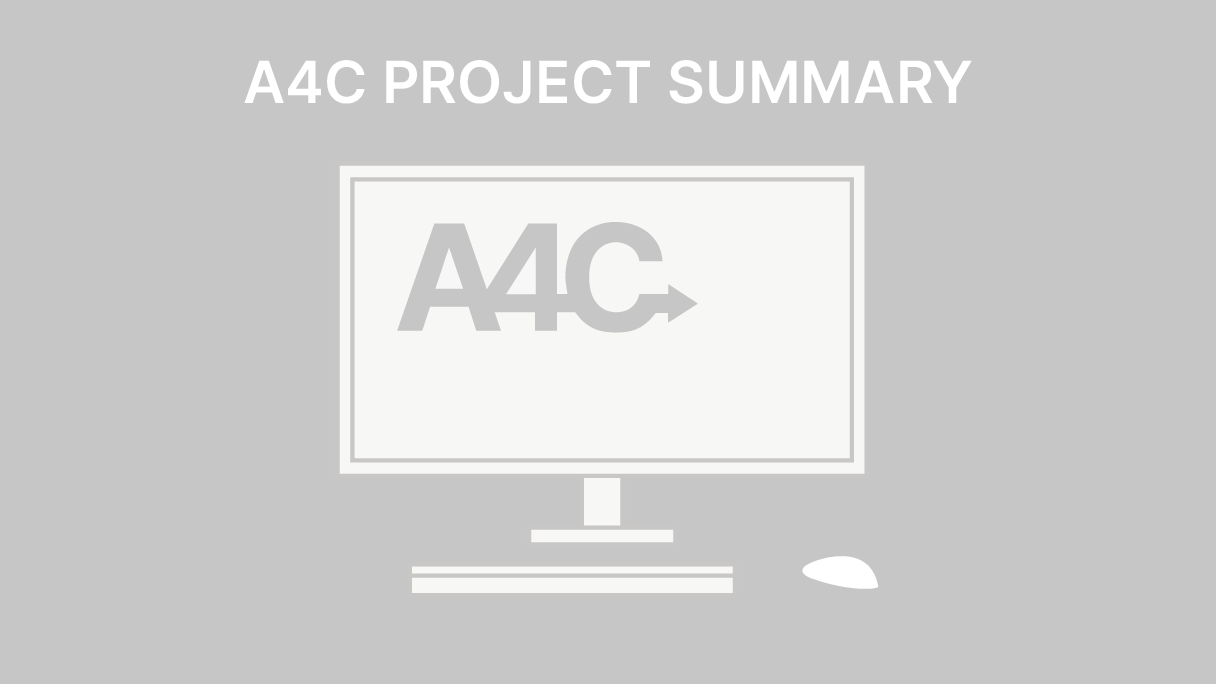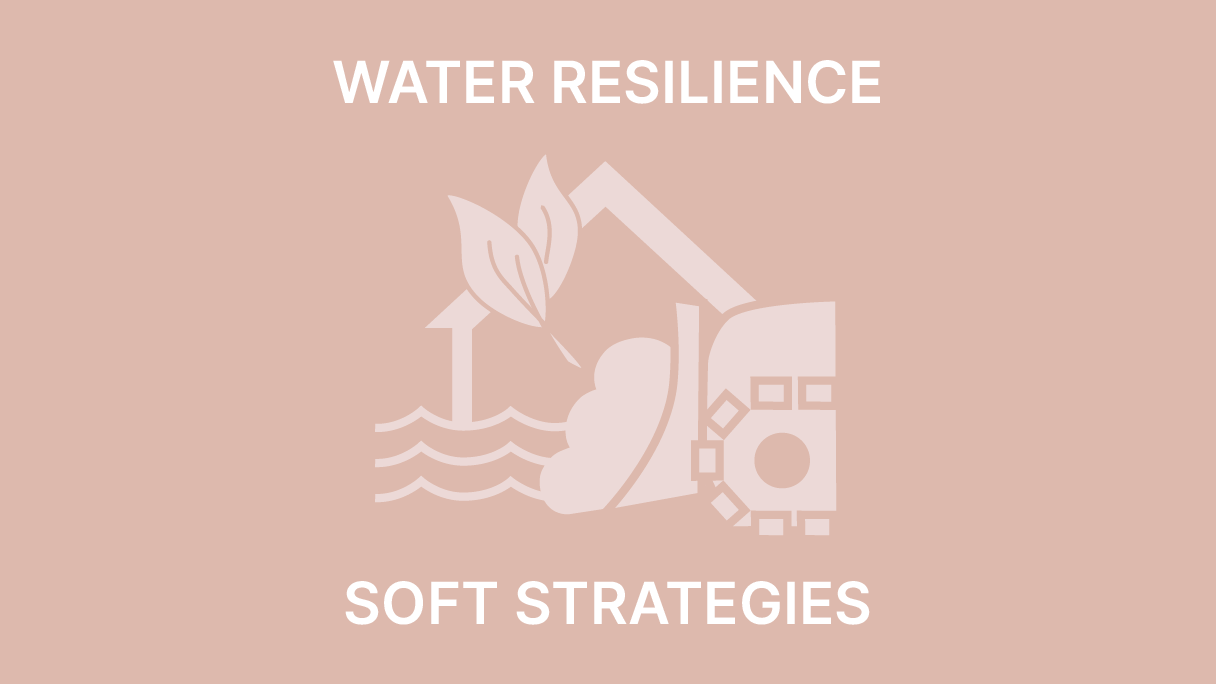How to use the 10 themes
There are 10 climate emergency design themes around which the ARCH4CHANGE content is structured. These 10 themes reflect the different aspects to be considered in holistic sustainable architecture approaches. In practice, all of these themes must be met to high standards to create truly sustainable architecture in reality. However, as a student you do not need to know all the 10 themes in-depth from year 1. Instead, future and global responsibility, environment and people and community themes should always be included in each design project in each year of study. Each year, each student then works progressively towards including additional themes until all ten are included in your design project by the end of the studies
5-step Design Process
The 5 step iterative process and 10 climate emergency design themes will help you in the design-decision making process and in justification of your approach. To centre sustainability at the start of your project and refine it throughout you need to undertake integrated design and iterative design processes. Exploring your project’s context helps to make design decisions based on knowledge (Step 1) and helps to define project values and your climate emergency design approach (Step 2). This then sets a good foundation for imagining and testing (Steps 3, 4), and refining your architecture approach based on feedback loops (Step 5). Make sure you communicate your values and climate emergency design approach clearly and explicitly – this helps in the testing and feedback phase
Green Infrastructure
Green infrastructure is the network of natural green spaces and landscapes within and around urban environments, such as food-growing areas, wetlands, forests, parks and wildlife gardens. Green infrastructure supports biodiversity, enhances ecosystem health, absorbs CO2 and manages adaptations to a changing climate (e.g. flood prevention and overheating). Co-benefits are supporting social activity and human well-being. Your project must tread lightly: after all, placing a new structure is hugely disruptive, as the developed land will have lost its existing ecological value forever. Your choice of site is therefore vital and value and protect existing natural habitats and leave the place better than it was before (i.e. retorative action). To do that, create a green infrastructure plan for your project that identifies and creates a map of the potential impact of your design on existing green infrastructure and on stakeholders and propose remedial measures to ensure a restorative approach. Distribute green spaces of different scales and diversity throughout the city within short walking distances and connect wildlife habitats through parks with green corridors and pedestrian spaces. Prioritise views of nature and trees, integrating generous physical access to different kinds and scales of nature for human and non-humans.
Blue Infrastructure
Description Blue infrastructures are natural and human-made water systems at different scales. Integrating blue infrastructure at different scales in your project has multiple benefits, for example for biodiversity, the urban micro climate, reduced water consumption, and they can act as social infrastructure and for climate adaptation. Working with water rather than against it can lead to restorative actions (e.g. by giving water space; recharging the ground water through permeable paving; enabling the thriving of other species).
In your project:
• Map natural and human-made water bodies and understand how your site is affected by water as a threat or an opportunity (e.g., rivers, sea) now and in the future.
• Use permeable landscape surfaces, include space for water retention systems that are also dual-purpose, i.e., spaces for leisure to act as social infrastructure and space for enhancing biodiversity (restorative actions) and that can store water in extreme weather events as part of climate change adaptation.
• To mitigate climate change at micro-scale, always consider efficient appliances as a priority. Then consider water recycling strategies that are low in energy use and embodied energy, e.g. simple rain water harvesting techniques.
Finally, sustainable urban drainage systems (SUDs) need to be combined at all scales: they all act together to mitigate and adapt to climate change and tackle the biodiversity crisis.
Dandaji Daily Market
An outdoor market organised around an ancestral tree that has become a public space. The project design references the area’s traditional market architecture of adobe posts and reed roofs, pushing the typology forward using compressed earth bricks and metal for durability. It results in an infrastructure that is visually appealing that the users can be proud of, and that has the potential of consequently attracting more people and activities to the area. The design of the project is kept very simple, using a colourful recycled metal canopy produced through a succession of individual shading structures that compensate for the difficulty in growing trees in such an arid, desert climate.
Meeting User Needs
User Centered Design is an approach to architecture that places the needs and preferences of the end users at the center of the design process. This involves conducting research to learn about demographic, makeup, behaviors, and the preferences of people who use the space. The goal is to create buildings and spaces that are functional, accessible, safe, and appealing to the people who use them. Inclusive public spaces are critical for creating communities that are welcoming, safe and equitable for all individuals. These spaces may play a critical role in promoting social cohesion, reducing discrimination, and building stronger relationships among diverse groups of people. By considering the needs of people with different physical abilities, we can design spaces that are more accessible, and by considering the needs of families with children, architects can design spaces that are safe and appealing for children to play in. User Centered Design can lead to higher levels of user satisfaction and a sense of ownership and responsibility for the spaces that they actually use and care about.
Resilient Design Approaches
Resilient design approaches entail the strategic integration of principles and strategies that enhance a building's capacity to withstand and recover from various stressors, such as natural disasters, climate change, and socio-economic shifts. This approach emphasizes not only the durability of structures, but also their adaptability and ability to bounce back in the face of adversity. Resilience operates across scales and timeframes, encompassing buildings, communities, and regions.
At the building scale, strategies encompass handling climate impacts, situating critical systems smartly, using future climatic models, passive survivability, robust materials, beauty, energy optimization, water conservation, waste solutions, local resourcing, and hazard-resistant specifications.
Community resilience involves social structures, local food systems, transport alternatives, stormwater management, communication hubs, education, and infrastructure planning.
Regionally, policies must value ecosystem services, protect aquifers, develop transportation and renewable energy networks, encourage diverse economies, and support regional manufacturing.
While total resilience might be unattainable, incremental steps can enhance resilience progressively, positioning systems and societies for better preparedness and responsiveness.
Water Resilience: Retreat Strategies
Flood mitigation strategies includes raised ground, flood proofing, and strategic retreat. These approaches address the increasing flood risks in developed areas. Retreat strategies involve removing structures from flood-prone zones, restoring natural processes.
Raised ground, entails elevating land to mitigate flooding risks. Particularly effective in low-lying regions adjacent to water bodies, it functions as a barrier against floodwaters, safeguarding buildings and homes. It can be complemented by other flood protection measures. However, this approach can be costly and requires adaptation to rising sea levels.
Flood proofing, reduces flood impacts on structures through modifications like elevation or flood barriers. These structural and non-structural measures shield buildings and equipment. Effective flood proofing necessitates meticulous planning and collaboration.
Strategic retreat, involves relocating communities and infrastructure from flood-prone areas. This curtails flood damage risks, but the process must be well-coordinated to minimize social and economic burdens. Addressing equity and cultural concerns is crucial, as certain communities may be disproportionately affected.
These strategies should be part of a comprehensive flood risk reduction approach, enhancing flood resilience by considering both their benefits and challenges.
Water Resilience: Retention Strategies
Flood retention strategies explores four key strategies: floodable plains, floodable squares, polders, and stormwater infiltration. Unlike defensive methods, these strategies store excess water to mitigate floods, crucial in urban areas with rising surface flooding and compromised drainage. Stormwater infiltration aids flood control by absorbing rainwater into the ground rather than overwhelming stormwater systems.
Floodable plains act as catchment areas for heavy rain and overflow, doubling as recreational spaces during dry spells.
Floodable squares are intentionally designed areas that transform into pools during rain, yet serve as urban spaces when dry.
Polders, reclaimed lowlands surrounded by dikes, protect against floods and enable development, requiring careful maintenance and sustainable practices.
Stormwater infiltration employs green techniques like rain gardens and permeable pavements to naturally filter and slow runoff.
These strategies underscore the importance of synergy between nature and infrastructure, fostering resilience, safety, and environmental well-being.
Water Resilience: Soft Strategies
Three key soft strategies for flood management include living shorelines, dunes and beach nourishment, and floating wetlands. Soft strategies emphasize enables effective flood management through holistic, nature-based solutions to mitigate flooding risks. They are gaining popularity due to their restorative nature, and are often paired with hard strategies for hybrid solutions. These strategies provide habitat for biodiversity and can serve as recreational spaces, although human disruption remains a concern.
Living shorelines are inclined natural banks with vegetation and natural materials that lessen wave impact, best suited for moderate flooding when combined with levees.
Dunes act as natural barriers, but proper vegetation is essential for stability. Armored dunes can enhance protection but need careful design.
Beach nourishment widens beaches, reducing erosion and storm surge impact, although its effectiveness varies. Designing these strategies involves protecting vegetation, creating paths, and setting back development.
Floating wetlands, made of buoyant materials, are adaptable and best for sheltered waters. They rise with floodwaters, filter pollutants, and provide wildlife habitat.
Challenges for soft strategies include extreme weather limitations, maintenance costs, and technical expertise. Opportunities lie in ecological benefits, affordability, community involvement, and environmental enhancement.
Water Resilience: Hard Strategies
Water resilience – hard strategies focus on five primary hard flood protection strategies: sea walls, flood walls, revetments, breakwaters, and dikes. While historically predominant, these resource-intensive approaches aim to resist floods. However, the shift towards resilient alternatives emphasizes the importance of a comprehensive approach. For instance,
Sea walls can serve as both protective barriers and communal infrastructure, highlighting the potential for multifunctionality.
Flood walls, akin to sea walls, require integration with softer strategies.
Revetments, sloping structures along riverbanks, mitigate wave energy and erosion, with design considerations for vegetation and water connections.
Breakwaters, perpendicular to shorelines, reduce wave energy and storm damage, offering opportunities for biodiversity integration and improved access.
Dikes, or levees, safeguard critical areas from floodwaters and require stability and ecosystem compatibility in design.
Despite challenges like material intensity and maintenance costs, hard strategies offer some benefits and enduring protection. However, integrating these strategies with softer approaches ensures effective flood risk management.












